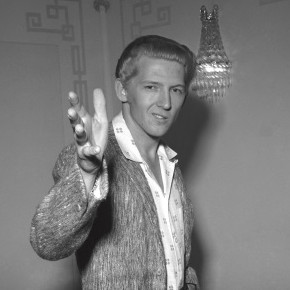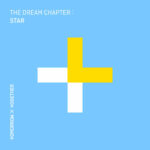Jerry Lee Lewis. The name itself conjures images of a wildman pianist, hammering the keys with fervor, his hair flopping, igniting stages and audiences alike. Among his vast catalog of Jerry Lee Lewis Songs, one track stands out as the quintessential embodiment of his electrifying energy and groundbreaking rock and roll spirit: “Whole Lotta Shakin’ Goin’ On”. This isn’t just a song; it’s an explosion, a seismic shift in music history that cemented Lewis’s place as a rock and roll icon. But the story behind this iconic track, a cornerstone of Jerry Lee Lewis songs, is as captivating and turbulent as the man himself, filled with musical influences, serendipitous moments, and a touch of rebellious audacity.
From the humble beginnings of Ferriday, Louisiana, music was Jerry Lee Lewis’s lifeblood. Even before he could fully reach the piano keys, he was drawn to the sounds that filled his home and the airwaves. His early musical landscape was a rich tapestry woven with threads of country, gospel, and blues. He wasn’t just listening; he was absorbing, internalizing the raw emotion of Hank Williams, the storytelling of Gene Autry, and the theatrical flair of Al Jolson. The anecdote of young Lewis, captivated by Al Jolson’s “Toot Toot Tootsie Goodbye” at the cinema, rushing home to learn it on the piano and returning before the movie even started, perfectly encapsulates his obsessive dedication to music. This wasn’t just a hobby; it was a consuming passion.
 Jerry Lee Lewis at the piano
Jerry Lee Lewis at the piano
His parents, recognizing this extraordinary talent, nurtured his gift. When his father acquired a farm, his priority wasn’t expanding the land but securing a piano for young Jerry Lee. Elmo Lewis even went as far as wiring their house for electricity, not for general comfort, but so his son could immerse himself in the sounds of the radio, further expanding his musical vocabulary. This unwavering support fueled Jerry Lee’s relentless practice, often clocking in eight hours a day. While his academic pursuits might have been less rigorous – his reading material largely limited to comics and the Bible – his musical knowledge was encyclopedic. He possessed an uncanny ability to dissect and understand the nuances of diverse musical genres, from the blues of B.B. King to the sophisticated pop of Frank Sinatra. He could hear a song once and internalize it, ready to unleash his own unique rendition years later. Everything he touched musically transformed, becoming unmistakably a Jerry Lee Lewis song.
Growing up in the religiously fervent environment of the Pentecostal South created an internal conflict for Lewis. Music, particularly the blues rhythms emanating from the local clubs he frequented, was often seen as the “devil’s music”. Sneaking into segregated blues clubs to witness legends like Fats Domino, Charles Brown, B.B. King, and Big Joe Turner was a clandestine act, a forbidden fruit that fueled his musical fire. This tension between the sacred and the secular would become a recurring theme in his life and music. His brief stint at the Southwestern Bible Institute, intended to lead him towards priesthood, ended abruptly when his boogie-woogie rendition of the hymn “My God is Real” was deemed too lustful by the school authorities. By the time he arrived at Sun Records, the secular side of Jerry Lee Lewis was firmly in the driver’s seat, ready to unleash his musical rebellion upon the world.
The path to Sun Records was paved with ambition and unwavering self-belief. Inspired by Elvis Presley’s meteoric rise under Sam Phillips’ guidance, Lewis saw Memphis as his musical Mecca. Rejection from RCA Records (told to play guitar, not piano) and the Grand Ole Opry (same instruction) only strengthened his resolve to find someone who recognized his piano prowess. He audaciously declared himself “The Great I AM,” a testament to his colossal ego and conviction in his own destiny. Driven by this unwavering belief, Jerry Lee and his father embarked on a pilgrimage to Memphis, scraping together funds from egg sales to finance their trip and a hotel stay – their first experience with running water.
Their arrival at Sun Studio was met with disappointment; Sam Phillips was out of town. Undeterred and with limited resources, Jerry Lee refused to leave. His persistence paid off when Cowboy Jack Clement, intrigued by Lewis’s claim of playing piano like Chet Atkins played guitar (but better), agreed to listen. Lewis played for Clement for hours, showcasing his raw talent and infectious energy. Upon Phillips’ return and hearing the recordings, he recognized the undeniable spark. Sun Records had found its last great rock and roll artist.
Lewis’s initial Sun single, “Crazy Arms,” while a solid country tune and a minor hit, didn’t fully capture his explosive potential. It was a cover of a Ray Price hit, and though Jerry Lee infused it with his signature piano stylings, it was more of a warm-up lap than a full-throttle race. The search was on for the song that would truly ignite his career. Meanwhile, Lewis honed his stage presence, touring with artists like Johnny Cash and Carl Perkins. His live shows were legendary, fueled by whiskey, comic books, cherry bombs, and an untamed energy that captivated audiences. He quickly outshone his tourmates, becoming the act nobody wanted to follow.
The catalyst for his explosive breakthrough was a song with a history of its own: “Whole Lotta Shakin’ Goin’ On.” Originally recorded by blues singer Big Maybelle in a Quincy Jones arrangement, and subsequently by Roy Hall, neither version possessed the raw, untamed energy that Jerry Lee Lewis would unleash. His inspiration came from an unexpected source: Johnny Littlejohn, a bass player he’d worked with in his pre-Sun days. Littlejohn’s faster, more raucous rendition of “Whole Lotta Shakin’,” complete with a spoken interlude instructing the audience on how to “wiggle around,” resonated deeply with Lewis. He adopted Littlejohn’s arrangement, infusing it with his own brand of piano pyrotechnics and unbridled showmanship.
 A jukebox, with the words
A jukebox, with the words
When Jerry Lee presented his version of “Whole Lotta Shakin’ Goin’ On” to Sam Phillips and Jack Clement, they were hesitant. They worried it was too suggestive for radio play and sounded too much like Elvis – a risky proposition in a market already dominated by “The King.” They envisioned a different path for Lewis, favoring a country ballad penned by Clement himself, the ironically titled “It’ll Be Me,” as the A-side. “Whole Lotta Shakin'” was relegated to the B-side, considered a mere afterthought.
However, during the recording session, something extraordinary happened. Despite initial reservations, as Jerry Lee and the band launched into “Whole Lotta Shakin’ Goin’ On,” the studio crackled with energy. Accounts vary, with some claiming a single take fueled by sheer adrenaline and dwindling tape supply. The reality likely involved multiple takes and studio tweaks, but the result was undeniable: a raw, spontaneous explosion of sound. Phillips and Clement, caught up in the sonic whirlwind, adjusted the mix, emphasizing the piano and adding slapback echo, enhancing the song’s primal energy. The spontaneity, the sheer visceral thrill of the performance, transcended any technical details. It was clear – “Whole Lotta Shakin’ Goin’ On” was not a B-side; it was an A-bomb.
The pivotal moment that catapulted “Whole Lotta Shakin’ Goin’ On” and Jerry Lee Lewis into the stratosphere was his appearance on the Steve Allen Show in 1957. Jud Phillips, Sam’s brother and Sun Records’ promotion man, recognized the visual spectacle of Jerry Lee’s performances and relentlessly pushed for a national television spot. Despite initial skepticism from network executives, Jud’s persistence and Jerry Lee’s sheer audacity landed him a slot on Steve Allen’s primetime variety show.
Jerry Lee’s Steve Allen Show performance is legendary. He didn’t just play “Whole Lotta Shakin’ Goin’ On”; he detonated it. He attacked the piano with a ferocity unseen on national television, his body convulsing with the rhythm, his voice a raw, untamed scream. The climax arrived as he yelled “shake!” and kicked his piano stool across the stage, sending it flying out of view. In a moment of spontaneous comedic brilliance, Steve Allen, known for his somewhat square persona and past mockery of rock and roll, picked up the stool and hurled it back across the stage. This wasn’t just a performance; it was a cultural detonation.
The Steve Allen Show appearance transformed Jerry Lee Lewis from a regional sensation into a national phenomenon. “Whole Lotta Shakin’ Goin’ On” soared up the charts, becoming his signature song and a defining anthem of rock and roll’s rebellious spirit. It was the sound of youthful liberation, of raw energy unleashed, and it announced the arrival of a true rock and roll original. “Whole Lotta Shakin’ Goin’ On” remains a cornerstone of Jerry Lee Lewis songs and a testament to the explosive power of rock and roll, forever linked to the wild, untamed genius of “The Killer.” While his career would be marked by further hits and controversies, it was this seismic track that first shook the world and declared Jerry Lee Lewis a rock and roll legend.

